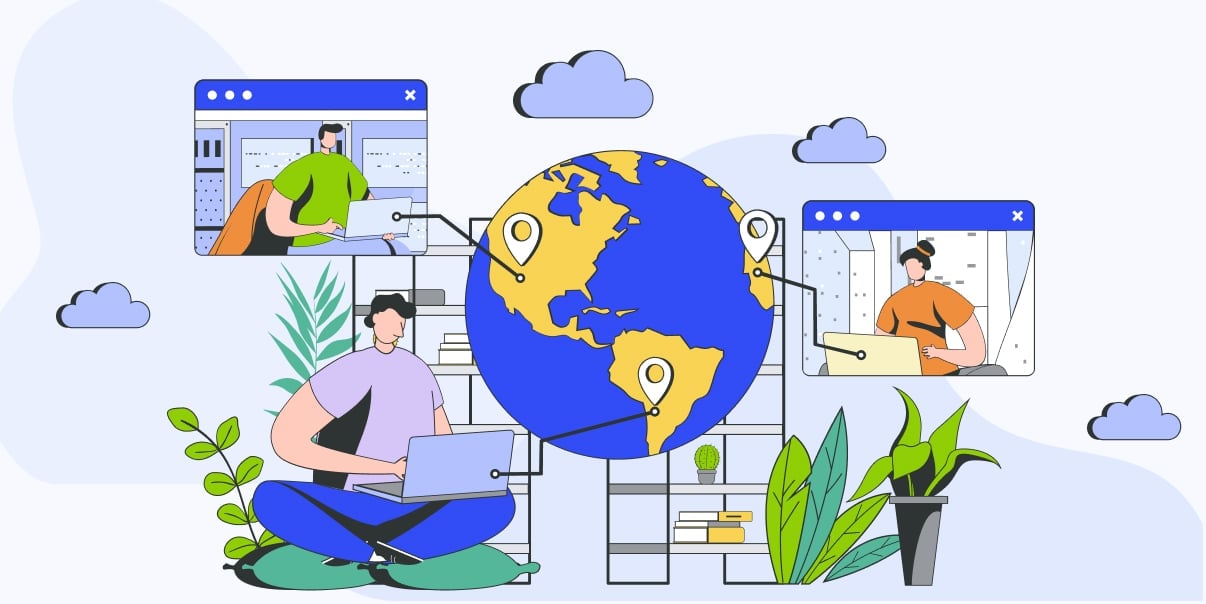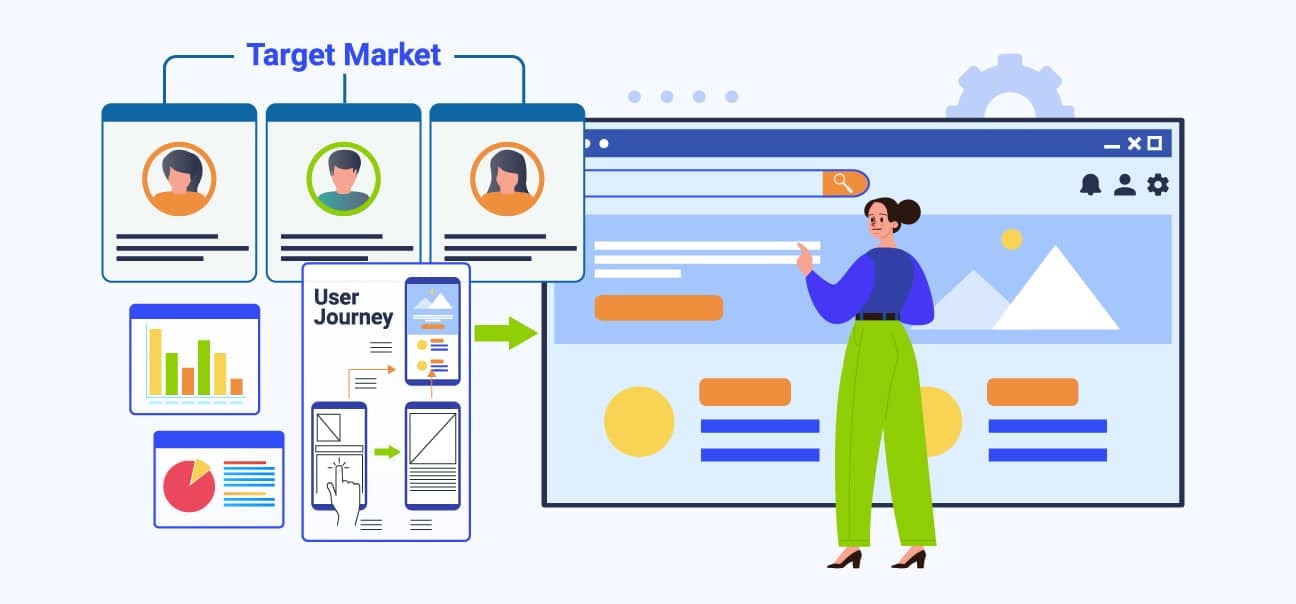Waterfall Model: Is the Waterfall Software Development Model Still Effective?
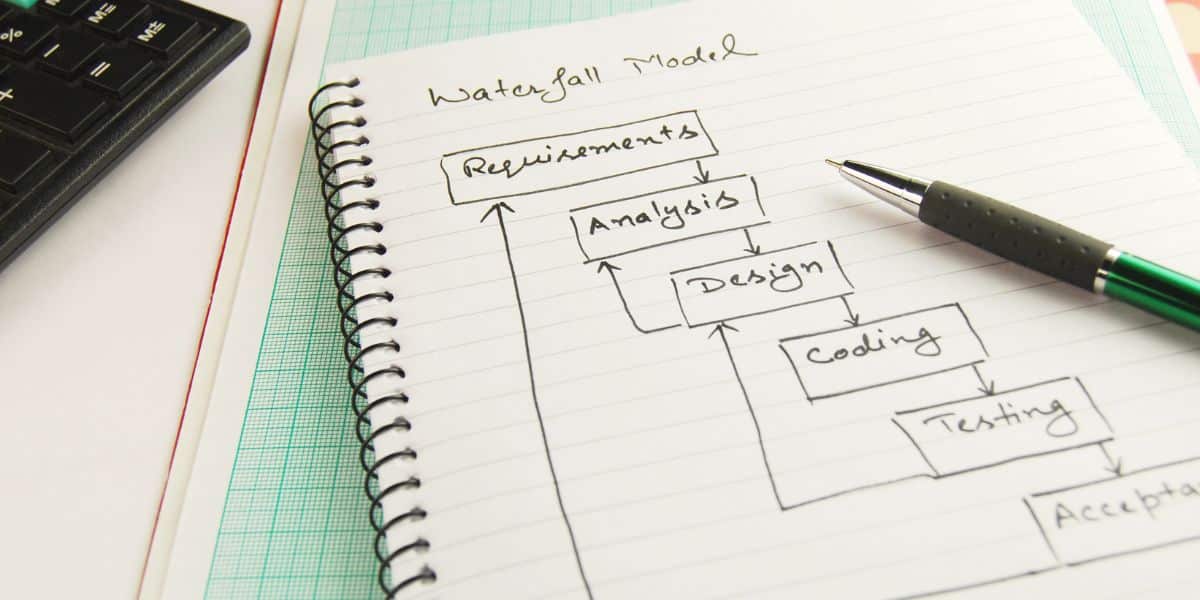
In software engineering and development, the fastest software releases win. The Waterfall Software Development Model is one of the various methodologies to use. BIT Studios’ engineers use this project management method for faster processing. Each section splits into sequences. A sense of achievement and progress, as well as better tracking, are the benefits of this process.
In today’s fast-paced world, developers view this model as antiquated. Let’s delve deeper to see whether it is one for the ages or if it still works as a development process aid.
Waterfall Model Methodology: A Brief Explanation
Like a stairway, teams work in phases in the software development waterfall model. In that order, users finish the previous phase before they work on the second. This process model relies on the front end for most of the work. Projects finished under this method break up further.
The waterfall method of software development was one of the first process models. Because of Waterfall’s simplicity, testers use the Waterfall model a lot. The project moves fast as most of the work gets done, even in the initial stages. It is not as used today as before, but it is a base for most modern software life cycle models.
Advantages and Disadvantages of the Waterfall Model in the Software Development Life Cycle (SDLC)
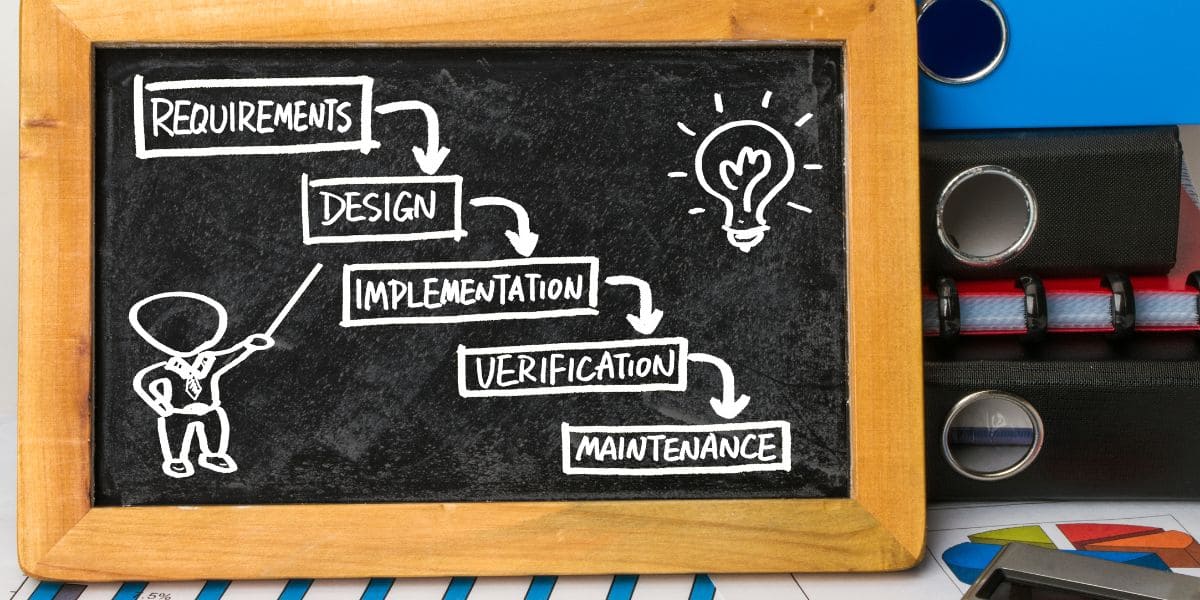
The Waterfall software development model was one of the first SDLC models. Because of this, users can enjoy a wealth of system testing knowledge to help them decide. It has its moments, with simplicity being a top advantage and ease of use.
The Waterfall software development method also saves time in the testing stage. The movement of sequential phases is faster if software developers know their needs.
Let’s take a closer look at this set of advantages.
Advantages of the Waterfall Methodology
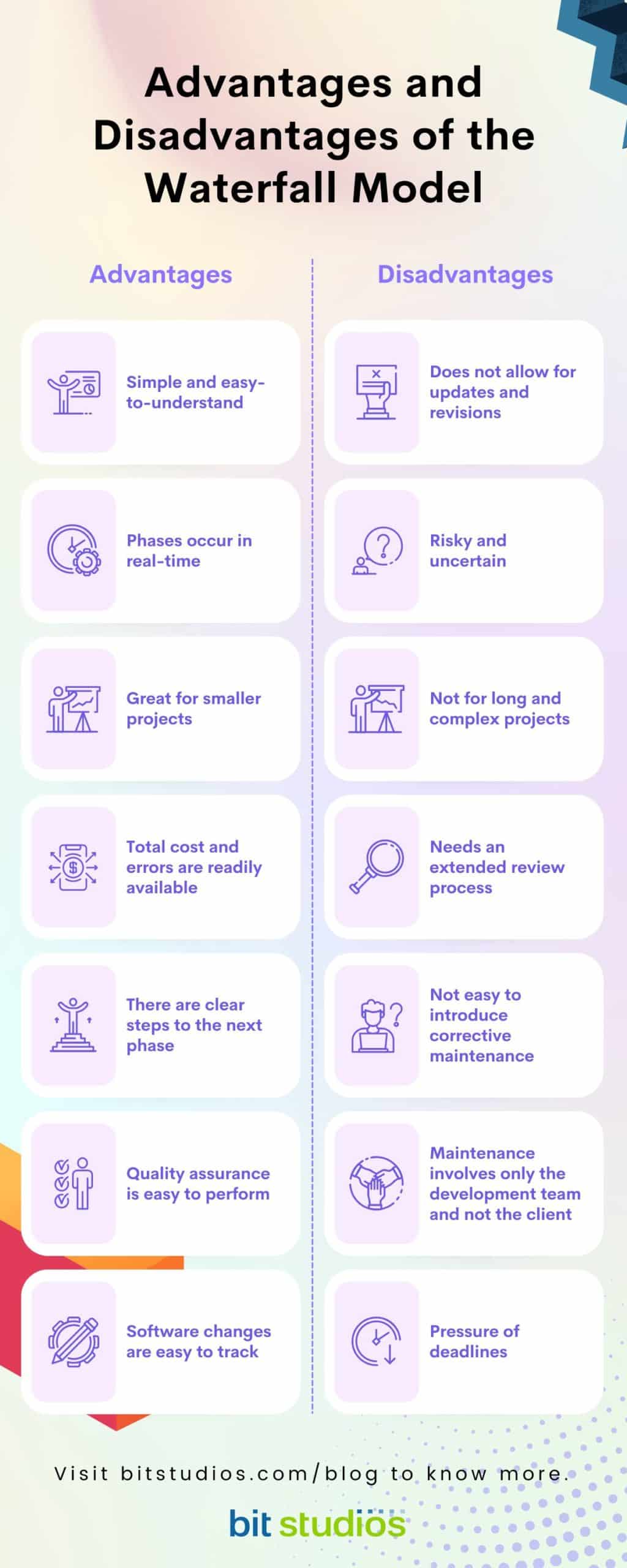
These are the significant benefits of the waterfall method:
- A simple, easy-to-understand model. It is perfect for beginners in the field and a refresher.
- Phases in the software waterfall method or SDLC occur in real-time. It’s great for learning more about the software implementation phase.
- The waterfall model is great, especially for smaller projects.
- Total cost and errors are available in an instant. All you need to do is look at the different phases.
- There are clear steps to the next phase, and you can keep track of the project per phase.
- Quality assurance is easy to perform. You can have it completed before the next phase.
- Software changes are easy to track. All you need to do is keep a tab of separate phases and the improvements or edits done.
Disadvantages of the Waterfall Methodology
In turn, here are the disadvantages of the waterfall model:
- Changes in the SDLC waterfall model prototype are only included at the end of the cycle.
- Once you’ve moved past the point the development process begins, it isn’t easy to move back to the previous phase. The software development life cycle of the waterfall method sees a perfect system.
- This is excellent for smaller deployments but not for long and complex projects.
- Dev teams need an extended review process. Other approaches don’t demand this.
- System design milestones are easy to track. It’s not as easy to introduce corrective maintenance as the client wants.
- The maintenance phase involves only the development team and not the client. A review or beta testing of the app only happens with a working prototype.
- There is the pressure of deadlines. Delays also pose a moderate to high risk to the project. A single delay ups the risk factor for the whole system design process.
Different Stages of Waterfall Model in Software Engineering
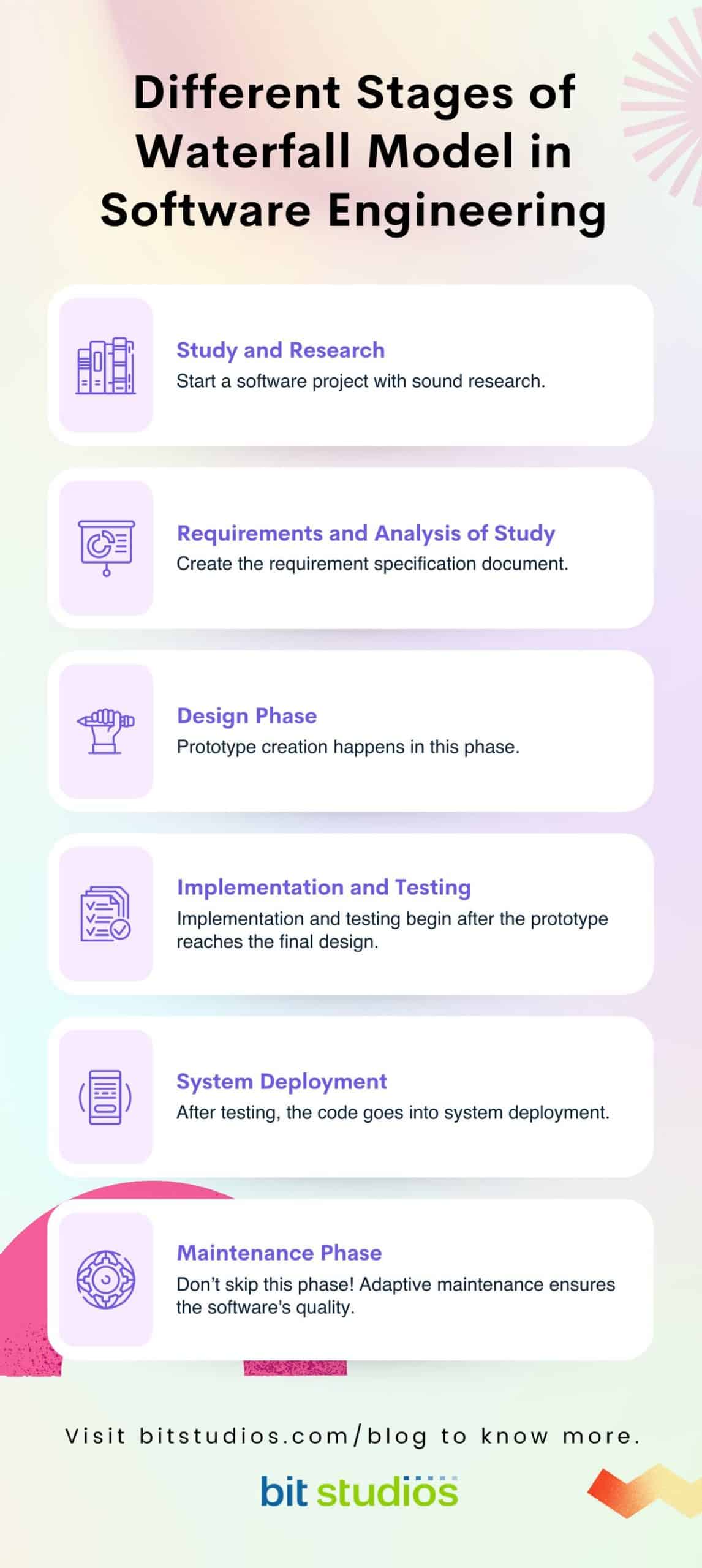
The Waterfall method of software development has its pros and cons. The pros are hard to ignore, and the results speak for themselves. It follows defined stages. There are not a lot of current development process model phases where methods are this easy.
There are different stages in the waterfall method of the software development process. Here’s what you need to know about it:
Study and Research
Data in a software testing project wouldn’t be sound without proper research. It’s best to start a software testing project with sound research. This will also help you determine if it’s worth working on the first process model of the project or not.
Requirements and Analysis of Study
Dev teams create the requirement specification document in this phase. You may also ask for hardware and system requirements from the client during this phase. This is also when analysis happens. The dev team also works on the software design document.
Design Phase
The Waterfall methodology software development team simulates a problem, including possible scenarios. The hardware and software requirements can be remade on a prototype system in this phase. You should also document the designs for the next phase.
Implementation and Testing
The software architecture testing phase begins after the prototype reaches the final design. Implementation happens during this phase since the bulk of the work is complete. It is in this step that errors and other problems are also reviewed.
System Deployment
After going through some rigid testing, the code goes into system deployment. This is not yet the final version of the SDLC Waterfall method framework. Instead, the team simulates a customer environment. Projects that are in the advanced coding phase are also made available to the market.
Maintenance Phase
The customer and client environment stage might still develop problems. It might even occur in live market situations. This adaptive maintenance is a phase the dev team should not skip.
When Should You Use the SDLC Waterfall Model?
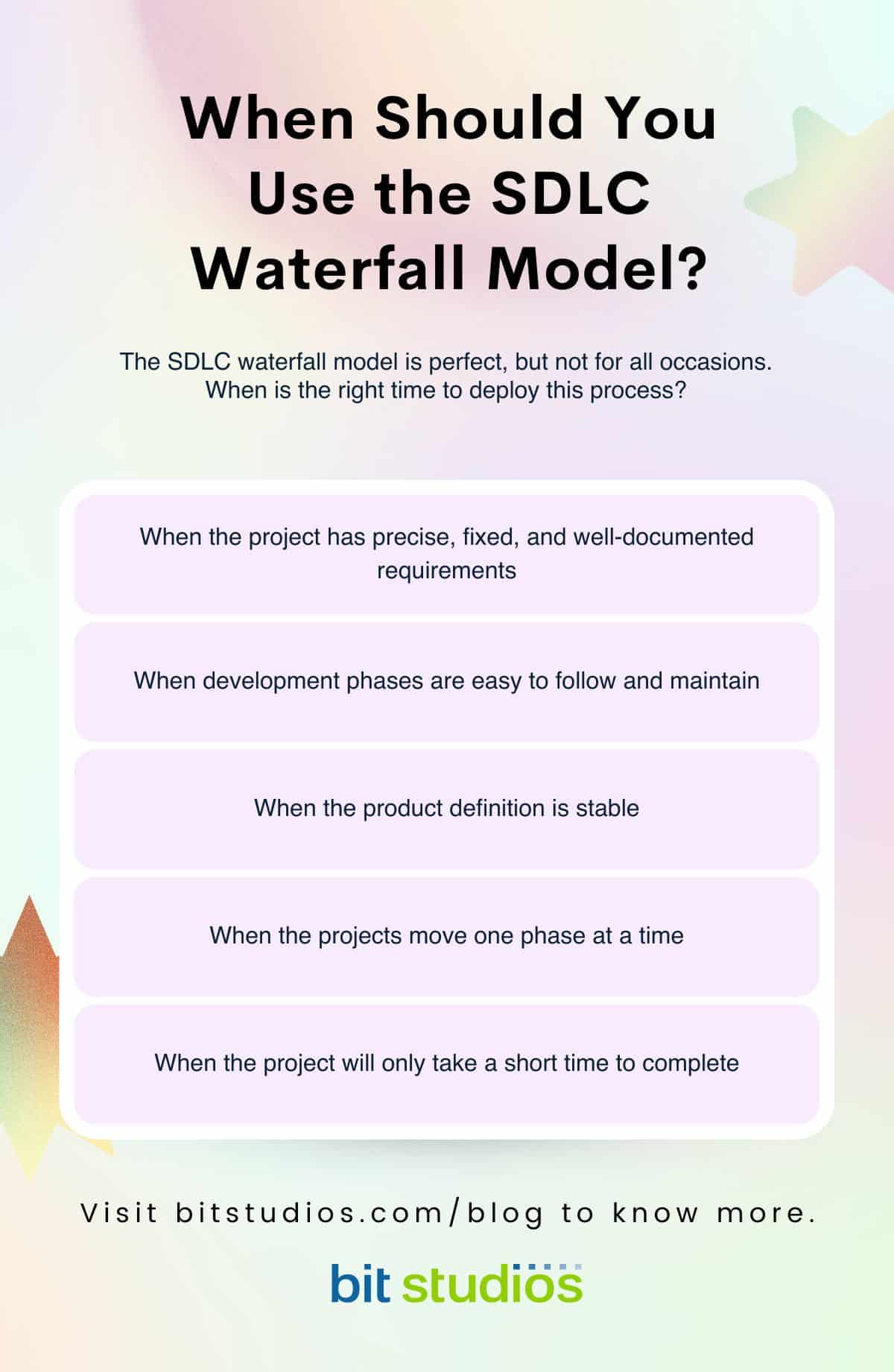
The SDLC Waterfall model is perfect, but not for all occasions. There are unit testing instances where it is not needed. Such programming language projects are large and multi-layered. These projects need other sequential model processes than the waterfall software method.
The Waterfall methodology of software development is still excellent for the right project. When is the right time to deploy this process? Here are a few examples:
- This model is perfect for smaller projects with precise, fixed, and well-documented requirements.
- Small-sized applications can also use this model to great effect.
- Phases are easy to follow and maintain.
- Projects whose product definition is stable can benefit.
- App and program testing projects that move one phase at a time can also use this model.
- Clients with a clear idea of the system architecture will love this method.
Conclusion
Some models exist long enough to become obsolete. Such is the fate of the software development life cycle Waterfall model. It’s not a good model, but it’s still the perfect choice for a dev team that knows a project’s exact needs. The waterfall model of software development is great for small and simple tasks.
Waterfall Software Development Model FAQs
Is Waterfall Better Than Agile?
No, Waterfall is not better than Agile. Agile is more flexible, and the units developed are repeatable.
It is easy to spot the differences between the Agile system and the Waterfall method SDLC. The Agile system is a modernized software development process. It is more advanced than the Waterfall model.
How Can Developers Benefit From the Waterfall Model?
Software developers can still benefit from the Waterfall model because this model is best if the project has a defined conclusion and simple goal. This method may feel restrictive for some projects. Small app developers and SME projects are in a great position to benefit more.
Is the Waterfall model outdated?
Yes, the waterfall model in software development is already an updated approach that can result in missed deadlines and inadequate software products.
We’re BIT Studios!
At BIT Studios we specialize in designing, building, shipping, and scaling beautiful, usable products with blazing-fast efficiency

